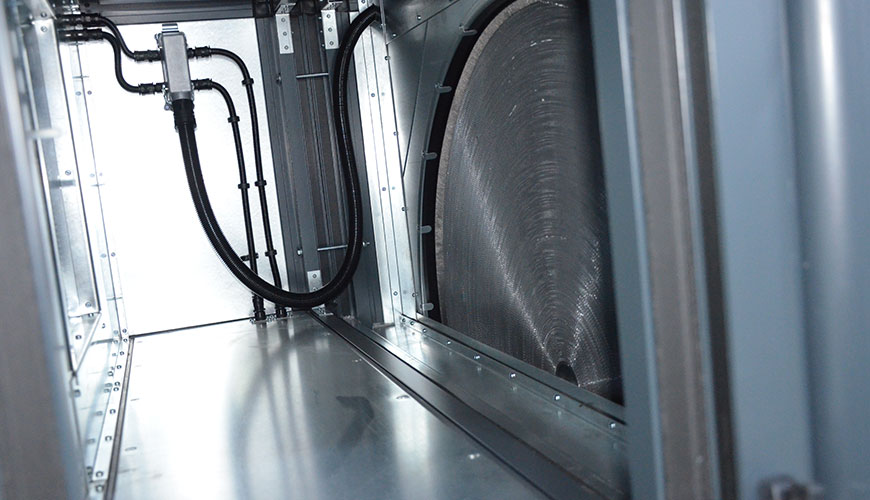Heat Recovery
Energy is saved by exchanging heat between fresh air and exhaust air without mixing them. Fresh air and exhaust air remain in separate systems.

Plate Heat Exchanger
Energy is saved by exchanging heat between fresh air and exhaust air without mixing them. Fresh air and exhaust air remain in separate systems. By transferring the energy carried by the exhaust air to the fresh air, the fresh air temperature increases towards the coil outlet temperature in winter. The opposite occurs in summer. The counter flow heat exchanger is made from high quality aluminum or stainless steel. By-pass dampers and stainless steel condense trays are standard equipment for these module. Its efficiency is important since it determines coil entering temperatures. Therefore, it should be selected well according to design conditions.
Rotary Heat Recovery
It can also be called as thermal wheel, where it places within supply and exhaust air flow direction. In the first half of rotation, heat is transferred to thermal wheel's heat absorbing materials and it gives heat in the second rotation part to the side which has lower energy. Rotary’s wheel is specially designed with containing a matrix distribution in order to increase heat transfer area and efficiency. Thermal wheel is usually made with galvanized steel or aluminum. It can be coated with epoxy for conditions where high corrosion resistance is required. There are three types of thermal wheel.
Condensation Type: Usually used for sensible energy recovery. Exhaust air flow’s temperature through the wheel should be cooled down below dew point for humidity transfer.
Enthalpy Type: It is available for higher energy transfer due to having hygroscopic surface. Latent energy transfer is possible, but not as much as comply with sorption type.
Sorption Type: Higher sensible and latent energy transfer is possible due to high hygroscopic coating.
Heat Recovery with Two Heat Exchanger
It consists of finned tubes placed in the fresh air and exhaust air chambers together with the pump that circulates water in the tubes. Copper tubes with aluminum fins and stainless steel condense trays are standard equipment for this module. Fluid flow rate is controlled by valves. In order to avoid the risk of freezing, specific amount of glycol can be mixed with water. Also, frost protection thermostats can be used for this process.
Heat Recovery Heat Pipes
This system provides a significant benefit when dehumidifying air to lower its temperature and reheat it not to deliver too cold air into the conditioned space. Heat pipe facilitates the applications when dehumidification is needed and increases system efficiency. It enhances indoor air quality. Heat pipe can be manufactured as a compact unit with cooling coil. It can be easily mounted in an air-conditioning system. Heat pipe can be readily implemented because it has already been filled with the refrigerant and will be mounted in the unit with cooling coil.



